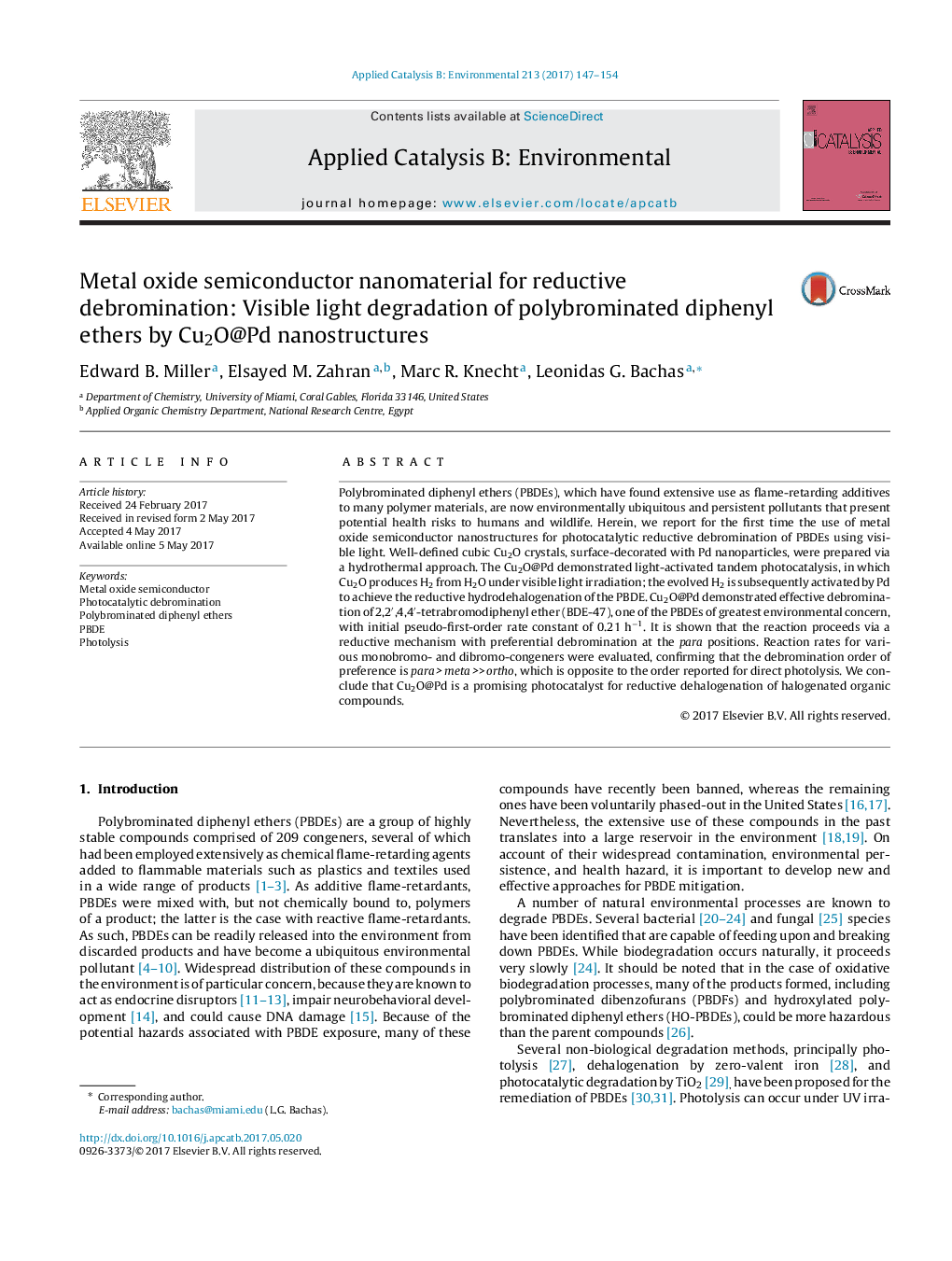| Article ID | Journal | Published Year | Pages | File Type |
|---|---|---|---|---|
| 6453890 | Applied Catalysis B: Environmental | 2017 | 8 Pages |
â¢Polybrominated diphenyl ethers are persistent pollutants that present risks to humans.â¢Cu2O@Pd demonstrated light-activated reductive hydrodehalogenation of PBDEs.â¢Photocatalyst showed preferential debromination at para > meta >> ortho.
Polybrominated diphenyl ethers (PBDEs), which have found extensive use as flame-retarding additives to many polymer materials, are now environmentally ubiquitous and persistent pollutants that present potential health risks to humans and wildlife. Herein, we report for the first time the use of metal oxide semiconductor nanostructures for photocatalytic reductive debromination of PBDEs using visible light. Well-defined cubic Cu2O crystals, surface-decorated with Pd nanoparticles, were prepared via a hydrothermal approach. The Cu2O@Pd demonstrated light-activated tandem photocatalysis, in which Cu2O produces H2 from H2O under visible light irradiation; the evolved H2 is subsequently activated by Pd to achieve the reductive hydrodehalogenation of the PBDE. Cu2O@Pd demonstrated effective debromination of 2,2â²,4,4â²-tetrabromodiphenyl ether (BDE-47), one of the PBDEs of greatest environmental concern, with initial pseudo-first-order rate constant of 0.21 hâ1. It is shown that the reaction proceeds via a reductive mechanism with preferential debromination at the para positions. Reaction rates for various monobromo- and dibromo-congeners were evaluated, confirming that the debromination order of preference is para > meta >> ortho, which is opposite to the order reported for direct photolysis. We conclude that Cu2O@Pd is a promising photocatalyst for reductive dehalogenation of halogenated organic compounds.
Graphical abstractDownload high-res image (102KB)Download full-size image
